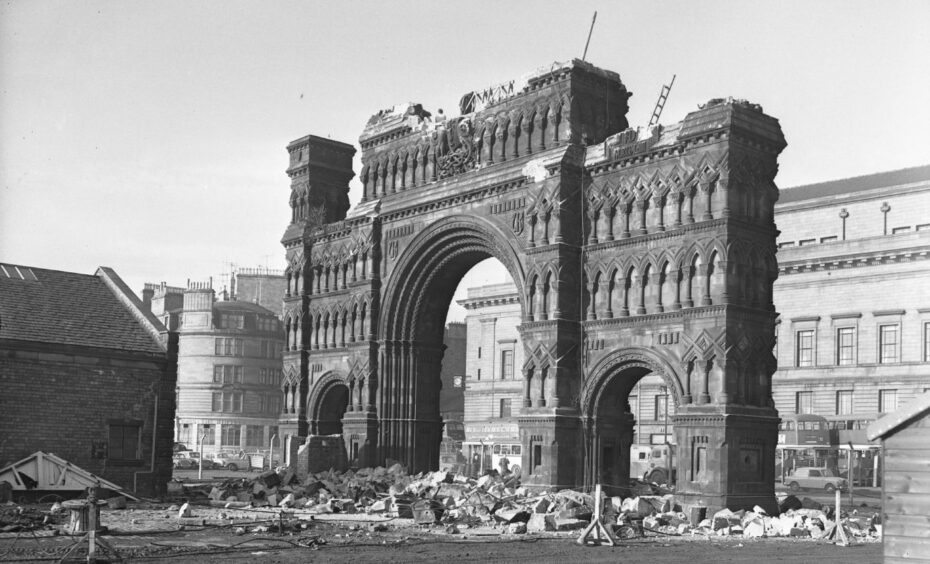
Dundee’s Royal Arch was doomed for the wrecking ball 60 years ago.
The showpiece entrance to the city would have been a majestic piece of Victorian architecture to edge the £1 billion waterfront redevelopment had it survived.
Instead it was turned to rubble in the name of progress.
It is nowadays synonymous with a Dundee that has long since disappeared.
The original arch was made out of wood and designed by harbour engineer James Leslie and constructed by cabinetmaker Alexander Boyd.
It stood at the junction of Dock Street and Shore Terrace and was erected to commemorate Queen Victoria and her husband Prince Albert visiting the city in 1844.
The city fathers launched a competition to design a more durable structure to replace the original wooden one and offered a premium for the best design.
John Thomas Rochead won from 100 entries and the total cost of the structure was £3,000 which was mostly funded by public subscription and harbour trustees.
It was just one of many famous landmarks Glasgow-based Rochead designed which included the Wallace Monument in Stirling which was completed in 1869.
The Royal Arch was completed in October 1850 and consisted of a large, triumphal arch, flanked by two smaller side arches, and surmounted by two central turrets.
It was 82 feet across.
A winding stair led to the 84-foot summit.
The material used in the construction was fine freestone.
It made national headlines in 1850 with the Illustrated London News describing the “imposing pile” as a “graceful ornament to one of the finest harbours in the country”.
Historical accounts differ as to the date of completion.
There may be confusion as the architect wasn’t paid until 1851 and the rest of the final debts were not settled until 1853 but 1850 stands up to detailed study.
Imposing Royal Arch became an eyesore
Despite the arch’s grand appearance when built, over the following decades it became unkempt with its original red brickwork blackened by years of smoke pollution.
The layer of soot was contrasted with white droppings from Dundee’s pigeons.
The Courier in 1919 said the Royal Arch was becoming a “sadly neglected memorial” in contrast to the Caird Hall building which was being constructed across the road.
“It is black with the grime of years,” it said.
“Hundreds of pigeons have made it their home.
“The face of the clock stands much in need of a good wash.
“Harbour workmen say pieces of masonry break off and fall.
“The main columns are disfigured with the tattered remnants of war-time posters.
“Across the road is the new City Hall.
“What a striking contrast!
“The Arch is in the custody of the Harbour Trustees.
“When are they to clean and preserve one of the landmarks to the city?
“It is becoming an eyesore.”
It was allowed to fall into disrepair and neglect.
Courier columnist Jim Crumley used to while away the wait between buses by watching the comings and goings at the dockside under the shadow of the Royal Arch.
He said: “The Vicky Arch was bombarded with filth from the outset.
“It was at once a huge, free-standing pigeon loft, the like of which Dundee’s Victorian pigeons had never dared to dream.
“Their descendants rather took it for granted and turned it into a high-rise pigeon slum.
“I leave to your imagination the consequences of the accumulated tons of unspeakable free-form excremental decoration that implies.
“The Vicky Arch was also mired from below.
“The decision to route a steady trundle of scruffy little steam-train pugs through the arch and in and out of the docks, blasted clouds of grey grubbiness all over the hem of Vicky’s skirts all day long.
“The whole wretched edifice was hoisted into the air at a time when Dundee’s industrial boom announced itself through hundreds of factory chimneys.
“So the Vicky Arch quickly became – and remained throughout its existence – a vilely besmirched shade of black.”
He said it was “hard to envisage a more unregal memorial anywhere in the land”.
Its time would soon be up
A road bridge was in consideration to cross the River Tay for a number of years before construction began in February 1963 following designs from William Fairhurst.
Construction of the Tay Road Bridge came at a cost quite apart from its £6m price tag.
As the site deemed most suitable, builders were required to demolish the Royal Arch to make way for the new road bridge slip roads.
Also demolished in this area, sadly, were the East Station and the Empress Ballroom.
In January 1964 the Tay Road Bridge Joint Board was told the 84-foot high landmark would be demolished from the top downwards by the contractor Duncan Logan.
“Pigeons Will Be Homeless!” was one local headline.
It was easy to understand why the pigeons were spitting feathers.
Slow but steady work started to dismantle the arch in February 1964.
Workers stood on top of the structure and broke it down with pick-axes but a steel flagpole fell 80 feet from the summit which badly damaged two parked cars.
Two other vehicles were “slightly buckled”.
No one was injured.
It was blown up with dynamite on March 16 1964 but a large chunk was left standing and “other methods” were used to take the rest of the structure down.
The rubble was used as foundations for the approach ramp.
Some saw it as a deliberate act of cultural vandalism and believed it should have been left where it was or reassembled elsewhere in a similar way to the Wishart Arch.
Others were glad to see it go.
Arguably, the area of Shore Terrace, behind the Caird Hall and across Dock Street from the Royal Arch was the living, beating heart of the city.
For here was the Dundee Corporation bus station with its ranks of green, double-decker buses amidst a score of 1949-vintage concrete bus shelters.
The nearby arcade was a popular attraction for the youth of the city while the bustling bus terminus itself, accessed by Castle Street and Crichton Street, was the focal point for travellers to all parts of the city and suburbs.
It remained, with the view of its Royal Arch and harbour replaced instead by the curves of the Tay Bridge approach ramps.
Old Dundee was turned to rubble
But, by 1973 it too was gone along with the old baths as planners began to modernise the infilled riverside area.
The city fathers replaced them with eyesore buildings like Tayside House in 1975 which stood as a hideous scar on Dundee’s skyline for almost four decades.
An arch did reappear in Albert Square in July 1991.
A 40-foot wooden replica of the original 1844 structure was part of the set constructed at the Meadowside junction for Dundee Rep Community Project’s production of Bridge.
It suffered the same fate as its predecessor.
Fragments of the 1850 Royal Arch were uncovered while the waterfront was being redeveloped in 2010 and its foundations were uncovered in 2014.
The once-proud Victorian landmark returned in May 2016.
The People’s Tower project invited people to help create a replica of the arch one Saturday morning in Slessor Gardens using 1,200 cardboard boxes.
Volunteers pulled the arch down at 1pm the following day, a Sunday, before hundreds of children were allowed to run on to it and trample it down into nothing.
It was gone in 60 seconds.
The Royal Arch had cast its shadow on Dundee soil for the final time.
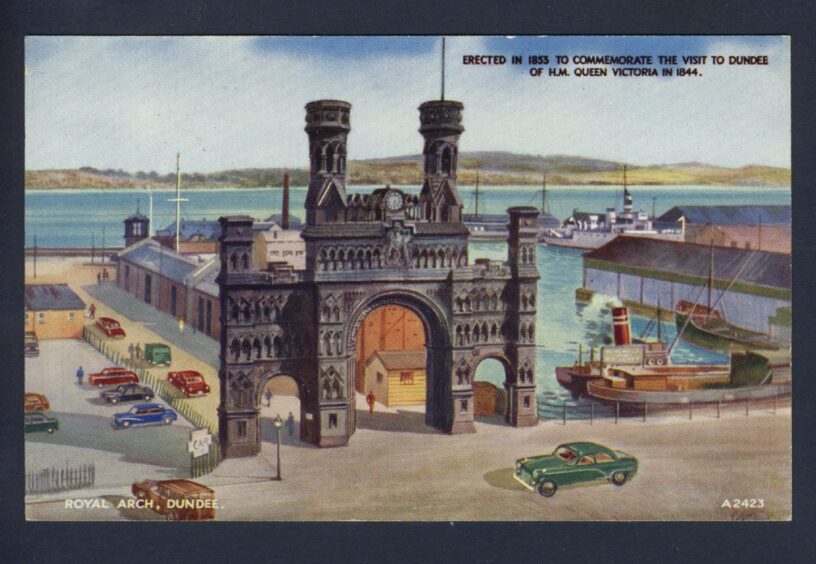
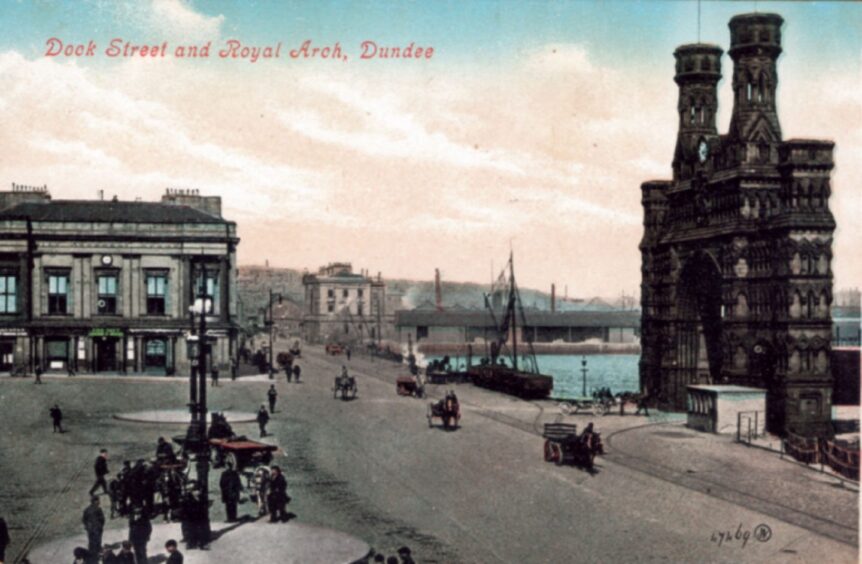
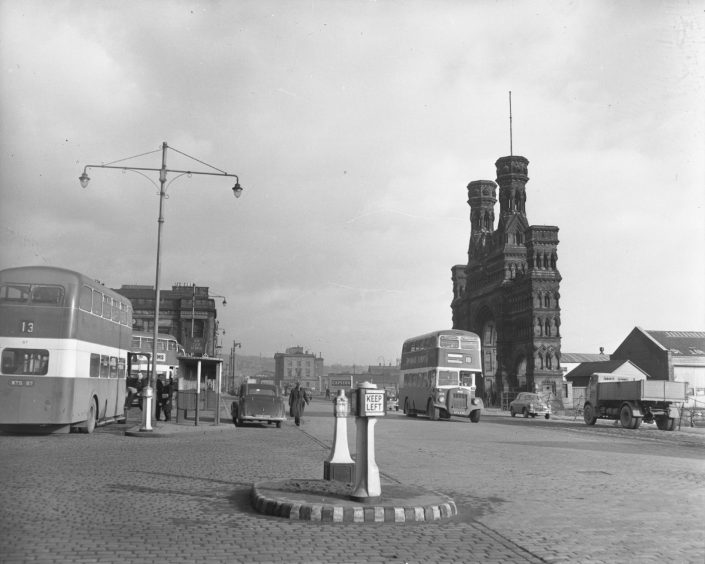
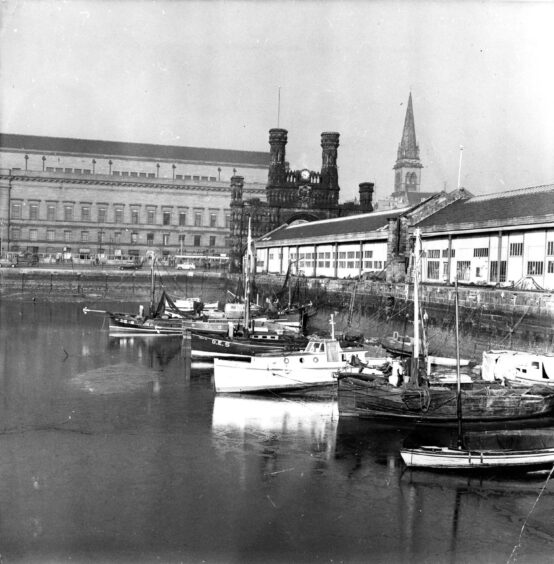
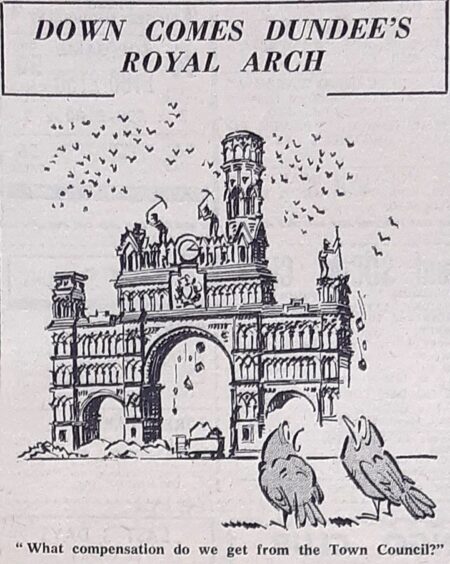
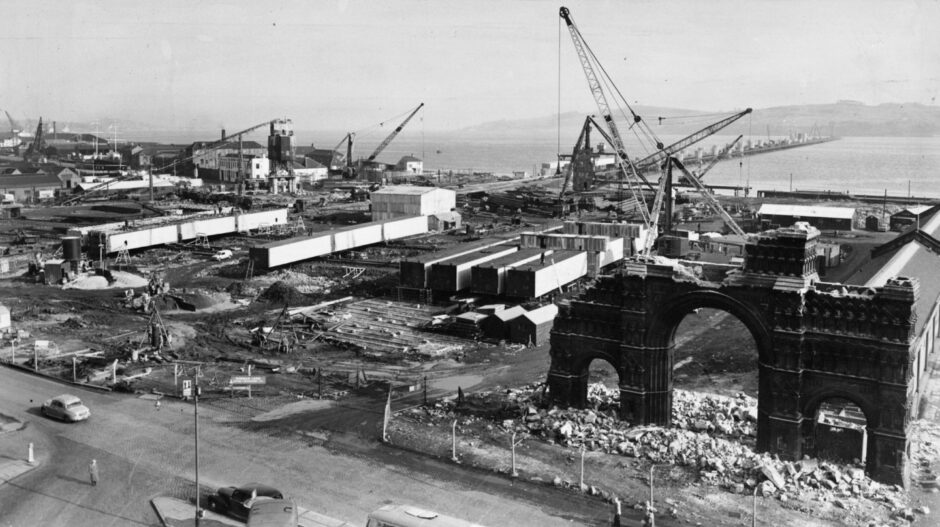
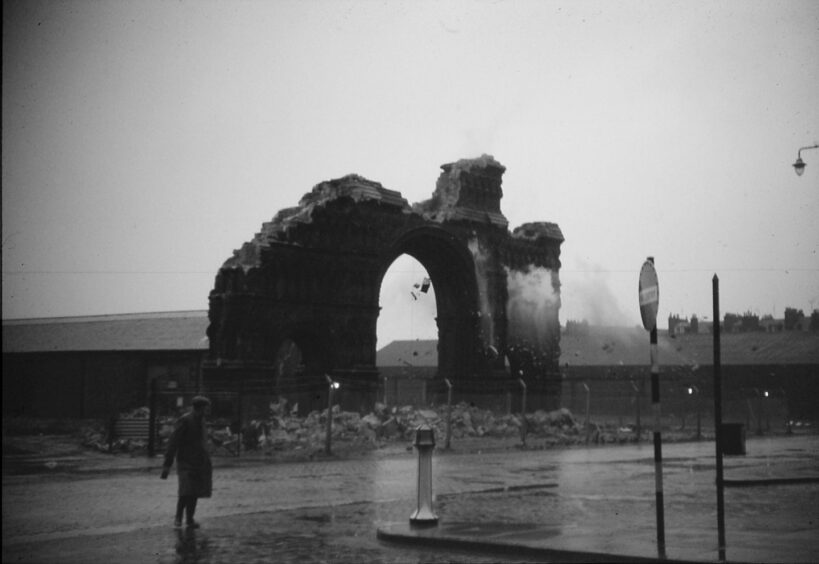
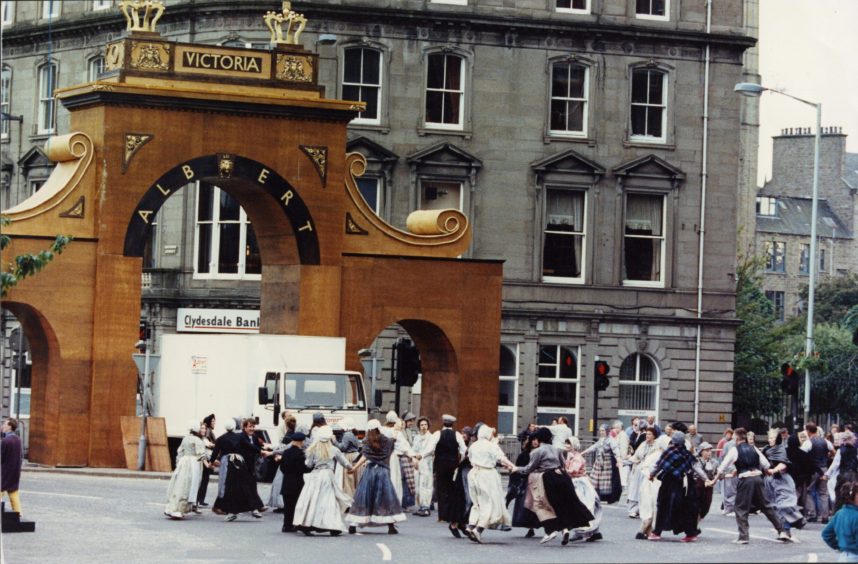
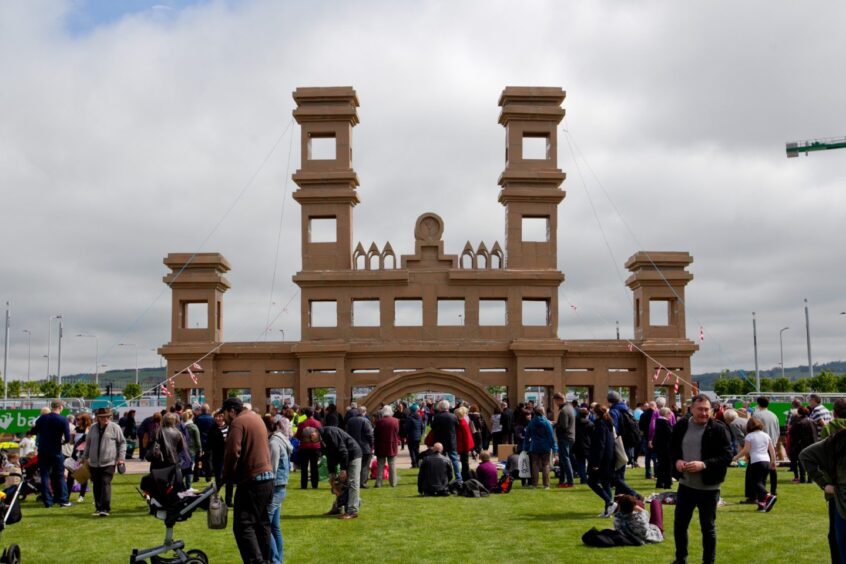
Conversation